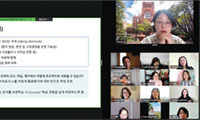BERNS
Fear of punishment in an economic downturn, as in a behavior laboratory can alter decision-making and discourage risk-taking.
Work is feeling more and more like a Skinner box.
A Skinner box is an operant conditioning chamber - in other words, a cage that automatically trains a laboratory animal to associate flashing lights and levers with rewards and punishments. It was invented in the 1950s by B.F.Skinner, the experimental psychologist, to study learning.
A green light flashes, or the animal pushes the right lever, and it is rewarded with a morsel of food. But some operant conditioning chambers were built with electrified floors: a red light comes on, and zap!
It doesn’t take long for a rat to figure out which light goes with the shock and which goes with the food. All animals, including we primates, are good at making these associations. Pretty soon, we don’t even need the light - the mere sight of the cage can send some of us into a state of apoplexy.
While the workplace is not quite an electrified cage, I think I would prefer a brief jolt of electricity over the intermittent shocks of daily stock market retreats or cutback after cutback by businesses.
Everyone I know is scared. Workers’ fear has generalized to their workplace and everything associated with work and money. We are caught in a spiral in which we are so scared of losing our jobs, or our savings, that fear overtakes our brains. While fear is a deep-seated and adaptive drive for self-preservation, it makes it impossible to concentrate on anything but saving our skin by getting out of the box intact.
Ultimately, no good can come from this type of decision-making. Just when we need new ideas most, everyone is seized up in fear, trying to avoid losing what we have left.
I am a neuroeconomist, which means I use brain-scanning technology to decode human decision-making. My colleagues and I conducted an experiment with our version of a Skinner box. Instead of a box, our participants were in a magnetic resonance imaging scanner. Instead of using an electrified floor, we attached electrodes to their feet. Although not unbearably painful, the shocks were meant to be unpleasant enough that the individual would prefer to avoid them altogether.
The central point of this experiment was that subjects had to wait for the shocks. Every trial began with disclosure of how strong the shock would be and how long they would have to wait: a range of 1 second to almost 30 seconds.
For many people, the wait was worse than the shock. Given a choice, almost everyone preferred to expedite the shock rather than wait for it. Nearly a third feared waiting so much that, when given the chance, they preferred getting a bigger shock right away over waiting for a smaller shock later. It sounds illogical, but fear - whether of pain or of losing a job - does strange things to decision-making.
Some people showed strong fear conditioning, as evidenced by deployment of neural resources to deal with the impending shock. Most of this activity occurred in the parts of the brain that process pain. That makes sense, but the activity rose well before the shock. All this worrying took energy, so these extreme responders had less neural processing power available for other tasks.
A recent study showed that the same parts of the brain we observed in our experiment are also active when people must sell something they are attached to. The implication is that when our brains sense pain or anticipate loss, we tend to hold onto what we have. When everyone does this at once, the result is a downward economic spiral.
Neuroscience tells us that when the fear system of the brain is active, exploratory activity and risk-taking are turned off. The first order of business, then, is to neutralize that system.
This means not being a fear monger. It means avoiding people who are overly pessimistic about the economy. It means tuning out media that fan emotional flames. It does mean being prepared, but not hyper-vigilant.
What I am doing now is looking for new opportunities. This means applying neuroscience to realms where it hasn’t been used before. I have joined anthropologists in using brain imaging to understand the biological roots of political conflict. I am starting another project to use brain imaging to predict which teenagers are likely to make fatally bad judgments and, hopefully, train them to make better decisions.
This strategy keeps my brain’s exploratory system active. Yes, these new ventures are risky, and some will fail. But while others wait for the storm to pass, I’m busy expanding into new areas. If I wait for money to start flowing again, the opportunities will have passed.
스마터리빙
more [ 건강]
[ 건강]이제 혈관 건강도 챙기자!
[현대해운]우리 눈에 보이지 않기 때문에 혈관 건강을 챙기는 것은 결코 쉽지 않은데요. 여러분은 혈관 건강을 유지하기 위해 어떤 노력을 하시나요?
 [ 건강]
[ 건강]내 몸이 건강해지는 과일궁합
 [ 라이프]
[ 라이프]벌레야 물럿거라! 천연 해충제 만들기
 [ 건강]
[ 건강]혈압 낮추는데 좋은 식품
[현대해운]혈관 건강은 주로 노화가 진행되면서 지켜야 할 문제라고 인식되어 왔습니다. 최근 생활 패턴과 식생활의 변화로 혈관의 노화 진행이 빨라지고
사람·사람들
more많이 본 기사
- 남가주 전역에 ‘물폭탄’… 성탄 연휴 ‘대혼란’
- [2025년 한 해 ‘진 별’들] 미주 한인사회 원로들 ‘역사의 뒤안길’로
- 체포 불체자 수만명 물류창고에 수감 추진
- 우크라이나도 “Merry Christmas!”… 지구촌 성탄 축하
- 크리스마스 연휴 음주운전 ‘꼼짝마’
- 트럼프 ‘전쟁할 결심’?… 미군 특수부대 카리브해 이동
- 여성 살해·자녀 납치 한인 ‘수배’
- 한인타운 한복판 주유소서 강도 ‘칼부림’
- “소변 불편한데 주저하다 방광 망가져”
- H-1B ‘10만 달러 수수료’ 연방법원, 이의소송 기각
- 새해 더 건강해지기 위한 의사의 과학적 조언 10가지
- 선우용여 “아들, 돈 없어 개밥 먹기도..아파트 마련해줬다”
- “대학 학자금 상환 안하면 임금 압류한다”
- 난방기 뜯자 ‘비밀공간’ 은신 마피아 보스 체포
- ‘라스베가스에서 만난 한인들’
- 한인들 위한 무료 법률 상담회 개최
- CBS가 보류한 ‘불법체류자 추방’ 보도, 캐나다서 원본 유출
- 뚜레쥬르, 뉴욕시 맨해튼 매장 오픈
- 바야흐로 ‘귀금속 시대’… 금·은·구리까지 사상 최고
- 샌프란시스코, 한국 방문해 이정후와 함께 야구 클리닉
- 원·달러 환율, 당국 개입에 42원 폭락
- 테슬라, “비상사태 시 차문 안 열려”
- [성탄절 앞둔 우울한 경제상황] ‘내 코가 석자’… 기부 급감
- [전문의 칼럼] 과호흡증후군
- 여성 살해·자녀 납치 한인 ‘수배’
- 최준희, 엄마 故최진실 생일 맞아 추억 “우리 마미 축하”
- 피클볼이 바꾸는 부동산의 얼굴
- 북가주 한인 독립운동가 ‘이대위의 날’ 제정 추진
- [스티브 강 ‘인사이드 미국’] 2026 중간선거: 트럼프 지지율 하락이 말해주는 것
- 최강팀 OKC 천적으로 떠오른 샌안토니오… 4패 중 2패 안겨
- 미·중 무역전쟁 휴전 지속… 반도체 관세도 보류
- 2026년 ‘올해의 컬러’ 전격 공개… 팬톤의 파격적 선택도 포함
- 서태지, 딸·엘리와 1년 만에 근황 “좋은 소식 없어 안타까워”
- 한국외대·연세대·한양대 GCEO 연합골프대회 성황
- [유혜미 칼럼] 치솟는 환율, 경제 지표의 역설
- [만화경] 해수부 부산시대
- 쿡, 나이키 주식 매입 2005년부터 사외이사
- LA 마약조직 집중 단속 갱단원 등 수백명 체포
- 다운타운 LA 라이브에 등장한 아이스링크
- [성탄절 앞둔 우울한 경제상황] 연말 선물로 중고품 급증
- 북한인, 아마존 위장취업 대거 적발
- 글로벌미션 체임버오케스트라 자선 공연
- [윌셔에서] 우리 안의 ‘생각하는 사람’을 깨울 시간
- 오헌, 샌디에고 떠나 피츠버그와 입단 합의… 송성문에겐 기회
- [팜스 카지노 리조트] “새해 맞이는 팜스에서… 푸짐한 행사들과 특별요리”
- [기고] 안정의 기준은 어떻게 제도가 되었나
- 중산층이 집을 사지 않는다?… 챗GPT가 내다본 주택시장 미래
- 가주태권도협 이취임식
- [왈가 왈부] 내란재판부·정통망법 또 수정… 졸속·땜질 아닌가요
- 팔레스타인서 구금된 한인 여성 무사 귀환
1/5지식톡

-
 미 육군 사관학교 West Poin…
0
미 육군 사관학교 West Poin…
0https://youtu.be/SxD8cEhNV6Q연락처:wpkapca@gmail.comJohn Choi: 714-716-6414West Point 합격증을 받으셨나요?미 육군사관학교 West Point 학부모 모…
-
 ☝️해외에서도 가능한 한국어 선생님…
0
☝️해외에서도 가능한 한국어 선생님…
0이 영상 하나면 충분합니다!♥️상담신청문의♥️☝️ 문의 폭주로 '선착순 상담'만 진행합니다.☎️ : 02-6213-9094✨카카오톡ID : @GOODEDU77 (@골뱅이 꼭 붙여주셔야합니다…
-
 테슬라 자동차 시트커버 장착
0
테슬라 자동차 시트커버 장착
0테슬라 시트커버, 사놓고 아직 못 씌우셨죠?장착이 생각보다 쉽지 않습니다.20년 경력 전문가에게 맡기세요 — 깔끔하고 딱 맞게 장착해드립니다!장착비용:앞좌석: $40뒷좌석: $60앞·뒷좌석 …
-
 식당용 부탄가스
0
식당용 부탄가스
0식당용 부탄가스 홀세일 합니다 로스앤젤레스 다운타운 픽업 가능 안녕 하세요?강아지 & 고양이 모든 애완동물 / 반려동물 식품 & 모든 애완동물/반려동물 관련 제품들 전문적으로 홀세일/취급하는 회사 입니다 100% …
-
 ACSL 국제 컴퓨터 과학 대회, …
0
ACSL 국제 컴퓨터 과학 대회, …
0웹사이트 : www.eduspot.co.kr 카카오톡 상담하기 : https://pf.kakao.com/_BEQWxb블로그 : https://blog.naver.com/eduspotmain안녕하세요, 에듀스팟입니다…
케이타운 1번가
오피니언
 스티브 강 전 한인민주당협회 회장
스티브 강 전 한인민주당협회 회장 [스티브 강 ‘인사이드 미국’] 2026 중간선거: 트럼프 지지율 하락이 말해주는 것
 김홍일 케이유니콘인베스트먼트 대표
김홍일 케이유니콘인베스트먼트 대표 [기고] 안정의 기준은 어떻게 제도가 되었나
 유혜미 한양대 경제금융대학 교수
유혜미 한양대 경제금융대학 교수 [유혜미 칼럼] 치솟는 환율, 경제 지표의 역설
 성민희 소설·수필가
성민희 소설·수필가 [윌셔에서] 우리 안의 ‘생각하는 사람’을 깨울 시간
 김정곤 / 서울경제 논설위원
김정곤 / 서울경제 논설위원 [만화경] 해수부 부산시대

[왈가 왈부] 내란재판부·정통망법 또 수정… 졸속·땜질 아닌가요
 정숙희 논설위원
정숙희 논설위원온라인쇼핑과 반품, 그리고 그 이후
 파리드 자카리아 / 워싱턴포스트 칼럼니스트 / CNN ‘GPS’ 호스트
파리드 자카리아 / 워싱턴포스트 칼럼니스트 / CNN ‘GPS’ 호스트 트럼프의 새 독트린 “미국을 다시 왜소하게”
 김동찬 시민참여센터 대표
김동찬 시민참여센터 대표 [미국은 지금] MAGA의 분열, 예견된 균열의 시작
1/3지사별 뉴스

“온 세상에 평화를⋯”
숨가쁘게 달려온 2025년을 이제 1주일 남짓 남긴 채 크리스마스 이브를 맞는다. 다사다난했던 한 해를 되돌아보며 마무리하는 연말 시즌과 크리…
H-1B비자 고임금·경력자에 우선권

‘올해는 ICE 이민자 체포 광풍의 해’
올 한해동안 버지니아와 메릴랜드, DC 등에서 연방 이민당국에 체포된 사람이 1만명이 훌쩍 넘는 것으로 조사됐다. 또 미 전국적으로는 22만명…
“ATM기 사용하기 겁나네”

한인들 위한 무료 법률 상담회 개최
샌프란시스코 베이지역 한인회(회장 김한일)는 지난 20일 한인회관에서 북가주 지역 한인들을 위한 무료 법률 상담회를 개최했다. 이날 행사에는 …
여성 살해·자녀 납치 한인 ‘수배’

오늘 하루 이 창 열지 않음 닫기 





















































.png)


댓글 안에 당신의 성숙함도 담아 주세요.
'오늘의 한마디'는 기사에 대하여 자신의 생각을 말하고 남의 생각을 들으며 서로 다양한 의견을 나누는 공간입니다. 그러나 간혹 불건전한 내용을 올리시는 분들이 계셔서 건전한 인터넷문화 정착을 위해 아래와 같은 운영원칙을 적용합니다.
자체 모니터링을 통해 아래에 해당하는 내용이 포함된 댓글이 발견되면 예고없이 삭제 조치를 하겠습니다.
불건전한 댓글을 올리거나, 이름에 비속어 및 상대방의 불쾌감을 주는 단어를 사용, 유명인 또는 특정 일반인을 사칭하는 경우 이용에 대한 차단 제재를 받을 수 있습니다. 차단될 경우, 일주일간 댓글을 달수 없게 됩니다.
명예훼손, 개인정보 유출, 욕설 등 법률에 위반되는 댓글은 관계 법령에 의거 민형사상 처벌을 받을 수 있으니 이용에 주의를 부탁드립니다.
Close
x